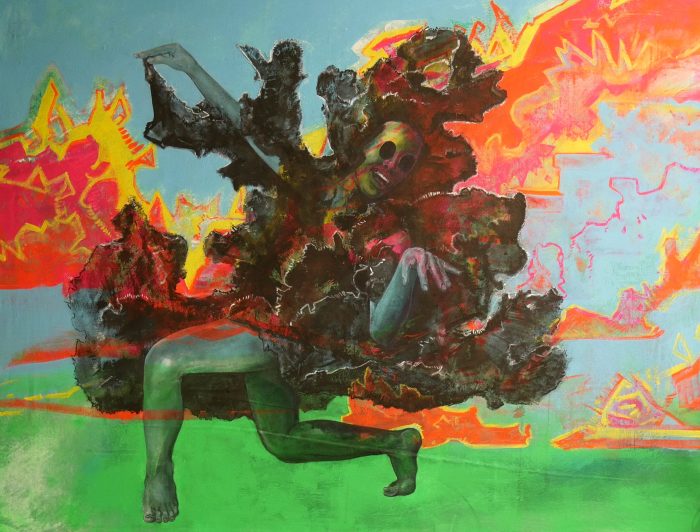
One might be prone to reading Cy Gavin’s paintings as illustrations of historical circumstance, but his work is, in fact, more akin to politics of representation than a representation of politics. Gavin suggests, “I admire poetry, as poetry relies on more than just the associations and definitions of words to create meaning and atmosphere, but also on rhythm and cadence, deliberately shaped phrasing, how words sound, and possible homonyms.” This is an essential intervention that has been taken up by other queer painters, such as Nicole Eisenman, who insist that narrative painting should not be confined by any story we might project. “I really try to make pictures that are an enactment rather than just a depiction,” says Gavin.

Consider the artist’s portrait Sally Bassett, With Kid, an homage to an elderly Bermudan woman who was wrongly convicted of attempting to poison the family that had enslaved her. In June of 1730, Bassett was burned at the stake, and it is said that a purple flower emerged from her ashes—a glorious member of the iris family now called the Bermudiana. So astonishing is the story that we might forget there is no way of knowing what Bassett looked like. Gavin’s painting is thus far removed from a retelling of history per se; it instead points to the necessity of looking sensitively and believing in art’s ability to interrupt seamless narratives of “progress.”
For instance, white progressives’ interest in racist violence often takes the form of black bodies only being legible through violence. In Gavin’s hands, Bassett does not become a tragic figure, but rather a fully imagined human being awash in deftly applied layers of color. The Bermudiana might be a metaphor for painting itself—the emergence of something beautiful and unexpected from the elemental components of life.










 in your life?
in your life?

